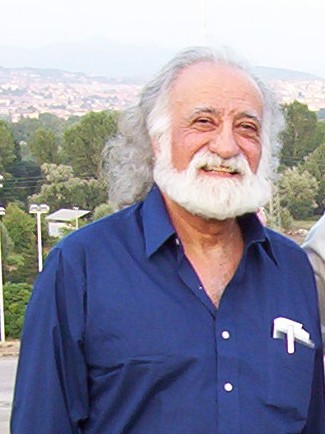- unknown (b.)
Bio/Description
An American professor of Electrical and Computer Engineering at The University of Texas at Austin, since 1999, he holds the Ernest Cockrell, Jr. Centennial Chair in Engineering. In 1965, he introduced the WOS module, the first complex logic gate implemented on a single piece of silicon. He is a fellow of both the Institute of Electrical and Electronics Engineers and the Association for Computing Machinery (ACM), and in 2014 he was elected to the National Academy of Engineering. He has spent much of his career pursuing aggressive ILP, out-of-order, and speculative computer architectures; the High Performance Substrate for Microprocessors (HPSm). Prior to joining the faculty at the University of Texas, he was at Cornell University from 1966 to 1967; he was Assistant Professor of Electrical Engineering from 1969 to 1976 at North Carolina State University; from 1976 to 1988 he was Professor of Computer Science and Mathematics at San Francisco State University; from 1979 to 1988, he was an Adjunct Professor of Computer Science at the University of California-Berkeley; and from 1988 to 1999 he was at the University of Michigan as Professor of Computer Science and Engineering. He received his Bachelor's degree from Northeastern University and his Master's degree and Doctorate at Stanford University, all in Electrical Engineering. Today, he works on problems for the microprocessors of the year 2018, when technology promises each chip will contain more than 30 billion transistors. His research focuses on breaking the abstraction layers that separate the problem statement in natural language from the circuits that execute the program. Some of his current projects include: (1) ACMP, a heterogeneous multi-core microprocessor, where many of the cores are reconfigurable either for high-performance ILP or for high-throughput; (2) improving the interface between the processor core and the DRAMs; (3) GPUs for non-graphics processing; (4) effective prefetching in a multi-core environment; and (5) more effective use of the run-time system for performance. As much as he enjoys research, his first love is teaching. The focus of his teaching has always been on understanding the fundamentals. At Michigan, he overhauled the introductory computer organization course, the intensive computer design course, and (with his former colleague Kevin Compton) the first required computing course for undergraduate EE, CS, and CE majors. Their motivated bottom-up approach is the subject of the textbook, "Introduction to Computing Systems, From Bits and Gates to C and Beyond," McGraw-Hill, 2001, ISBN: 0-07-237690-2, which he co-authored with his former PhD student Sanjay Patel, who is now a tenured Professor at the University of Illinois, Urbana-Champaign. The 2nd edition was published in 2004, ISBN 0-07-246750-9, and the 3rd edition is in progress. This work is used as the course textbook for several universities including: his undergraduate Introduction to Computing class the University of Texas at Austin; the introduction Computer Engineering course at the University of Illinois at Urbana Champaign; Introduction to Computer Systems at University of Pennsylvania; and Computer Organization and Programming at Georgia Institute of Technology. It is in this textbook that the LC-3 Assembly Language is introduced. He is currently authoring the third edition. In 2009, he received an honorary Doctorate from the University of Belgrade. He is the recipient of several awards including the 1995 IEEE Emannuel R. Piore Medal "for contributions to computer architecture leading to commercially viable high performance microprocessors"; the 1996 IEEE/ACM Eckert-Mauchly Award "for important contributions to instruction level parallelism and superscalar processor design"; the 1999 IEEE Wallace W. McDowell Award "for your impact on the high performance microprocessor industry via a combination of important contributions to both engineering and education"; the 2005 IEEE Computer Society Charles Babbage Award "for fundamental contributions to high performance processor design"; and in 2014 he was elected to the National Academy of Engineering "for contributions to high-performance microprocessor architecture".
-
Noted For:
Introducer of the WOS module, the first complex logic gate implemented on a single piece of silicon -
Category of Achievement:
-
More Info:


